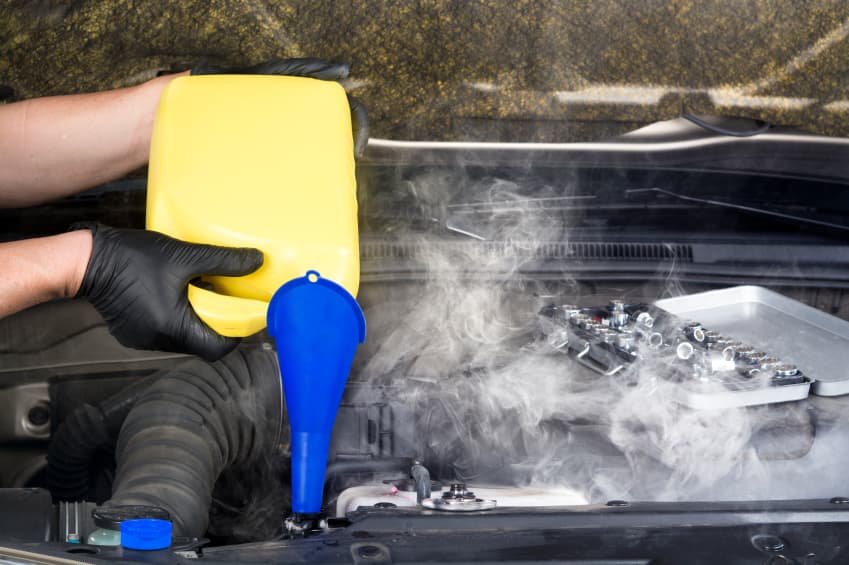
January 26, 2017
How Does a Coolant Temperature Sensor Work?
All modern cars and trucks come equipped with coolant temperature sensors (CTS). These devices are vital to the proper function and health of the engine. But how does a coolant temperature sensor work—and what’s its purpose?
What Does a Coolant Temperature Sensor Do, and How Does It Work?
The engine coolant temperature sensor monitors the operating temperature of your car’s engine and alerts the onboard computer of a potential problem. The sensor measures the temperature given off by the thermostat and/or the coolant itself.
The sensor then sends real-time temperature data to the onboard control system. Your vehicle’s computer uses this temperature information to either continue operating or adjust certain engine functions, always working to keep the engine temperature at an ideal level.
If the engine gets too hot, the computer can turn on the cooling fan, adjust the fuel mixture, or open the exhaust gas recirculation system to prevent overheating. If the engine is too cool, it can make adjustments to warm up the components to the optimal operating temperature.
Where Is the Coolant Temperature Sensor Located?
At some point, you might need to find the CTS for troubleshooting or maintenance. On most vehicles, the CTS is near the engine thermostat. The exact location can vary depending on the vehicle’s make and model, but it is usually positioned where it can be immersed in the coolant flow for precise readings.
When the Car Temperature Sensor Goes Bad
As with any other component in your car, the sensor can wear out over time and become discolored. This can cause a range of problems, including overheating the engine.
If you know where the engine sensor is and what it looks like, you can conduct a visual inspection to see if it has developed any cracks or fissures. While this visual check can be helpful, it won’t help you diagnose every possible problem, as some sensor malfunctions can present without visual evidence.
In general, if your sensor is not working, it will send a signal to the computer. At that point, you may already notice issues, such as:
- Check engine light illumination
- Poor fuel economy
- Engine overheating or running too cold
- Irregular cooling fan operation
If you have any of these issues, it might be time to test or replace the engine coolant temperature sensor. To get the job done properly, take your vehicle to a professional auto maintenance shop.
How to Test a Coolant Temp Sensor
Armed with knowledge of how the coolant temperature sensor works, consider testing the device before heading to the auto shop for repairs. Taking this preliminary step could help you resolve issues on your own, saving you time.
It may also help you have a more informed discussion with the mechanic. You can provide specific information about the sensor’s performance, which can assist in a quicker and more accurate diagnosis. Check for issues with a multimeter, a handheld device that measures multiple electrical properties in your car.
Here are the basic steps:
- Allow the Engine to Cool: Park the car and let the engine cool for about 15 minutes to avoid burns.
- Locate the CTS: Pop the car’s hood and secure it before letting go. Then, find the CTS near the engine thermostat. Hint: If you can’t find a temperature sensor in your car, this article should help.
- Disconnect the Sensor: Attach the black lead to a metal plate for grounding and the red lead to the terminal end of the CTS.
- Set the Multimeter: Before turning the multimeter on, set the digital reading to the manufacturer’s specifications (usually in the 20k ohm range) for the sensor’s resistance at the current temperature. The specifications are usually found in the vehicle’s service manual.
- Measure Resistance: Turn on your car engine and let it run for about three minutes. Place the multimeter probes on the sensor terminals and check the reading while the engine is running.
- Interpret the results: If the reading is within the specified range, the sensor is likely functioning correctly. If the reading is outside the range, the CTS may need attention.
If testing the CTS is too complicated, leave the task to a professional.
Replacing the Car Temperature Sensor
The sensor will eventually need to be replaced. If the engine sustains any kind of trauma or damage, sensor replacement is *always *recommended because you don’t want to risk running the vehicle with a faulty one. Even general wear and tear can cause the sensor to erode over time.
Visit Meineke for an auto inspection to improve and maintain fuel efficiency and prolong the lifespan of vital components. Preventative maintenance can save you some headaches and hassle in the long run.



